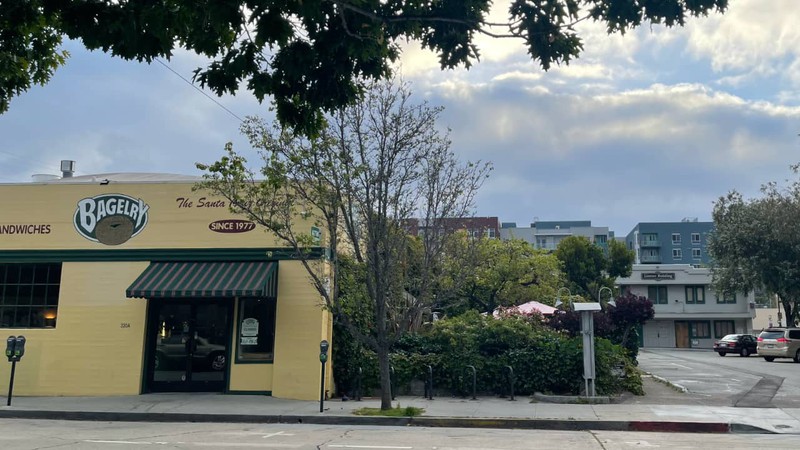Suddenly, a lot of housing is being built across the state.

New six-story apartment buildings in downtown Santa Cruz loom large over a funky one and two-story plaza one block away which is home to Redwood Records, The Bagelry (est 1977) and the world renowned Kuumbwa Jazz Center. Chris Neklason contributed
The state of California has set an ambitious goal of building 2.5 million units of new housing by the end of the year 2030—that’s almost 500,000 units per year. Over the past decade, housing production averaged fewer than 80,000 new homes each year.
Judging from news breaking throughout the state, the lofty goal does not seem impossible. Through a combination of recent state legislation and new programs and incentives, housing projects of all sizes are hitting the development pipeline.
What We’re Seeing
Across the state, municipalities are scrambling to get their general plan housing element approved by the California State Department of Housing and Community Development (HCD).
Communities that have been reluctant to build multifamily housing, in particular, are rushing to catch up with their housing element obligations—lest the situation be wrested from their control and builders allowed to plow ahead, under state or court auspices.
One of my favorite headlines in this vein is from a story in the Los Gatan regarding that leafy Santa Clara County town’s efforts, headlined:
Even as laggard communities work to get certified by HCD, housing is being built across the state at a breathtaking pace. Though individual projects involve new housing units numbered in the dozens or hundreds, they all add up.
But there are also projects on the drawing board for much larger developments and some already under construction. These include an 8,000-unit “healthy living” seniors community in El Dorado/Sacramento counties, a 1,464-unit affordable neighborhood in Sonoma County, and the ongoing Brooklyn Basin development in Oakland. Not to mention the city-sized, 400,000-resident California Forever community proposed in Solano County.
How to Get Involved
Plans for housing development in local communities are first publicly vetted by the local planning commission and then usually voted upon by the city council or county board of supervisors.
All meetings are public, and are good forums for citizen presence and involvement.
Recent state legislation addressing housing and development, combined with the shifting majority public political sentiment from a NIMBY mindset to YIMBY—especially among younger voters—constrain local citizens’ or agencies’ ability to completely halt developments that make it to the permitting process.
But citizens do maintain leverage to make housing projects better.
Is the project for multifamily housing? Advocate for an onsite playground if one isn’t in the plans.
Is the project’s landscaping water-efficient, utilizing native plants? Is the lighting Dark Sky Approved? Is there solar power available? Is the roofing a white color to reduce the urban heat island effect? Does the project incorporate efficient electric heat pumps for heating and air conditioning?
Become a planning geek and advocate for more attractive, resilient and sustainable elements in the development plans while it is still early in the planning and permitting process.
If the project is built on a transit corridor and exempt from automobile covered parking requirements, how safe is the area for bicycle use, what are the plans for secure onsite bicycle storage, and what are the public mass transit options? Housing and transportation are linked, and a way to make a housing project better is to increase options for safe, car-free transportation.
Become a transportation policy geek and work to get those new sidewalks, protected bike lanes and improved mass transit implemented in your community.
The housing boom is here. Now is the time to get involved and make it better.
Get into the weeds. Find the missing pieces. Make the ask.